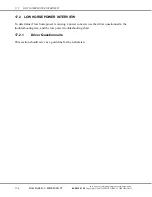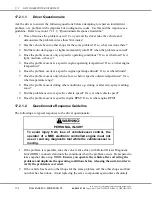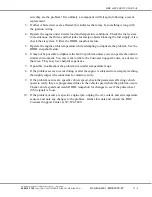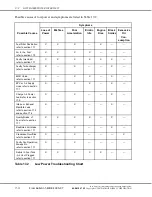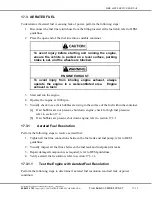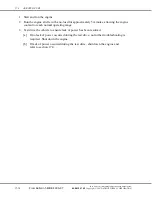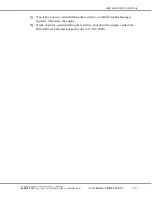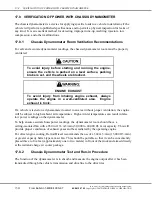
17.6
FAULTY EXHAUST SYSTEM
17.6 FAULTY EXHAUST SYSTEM
To determine if a faulty exhaust system is causing lack of power, perform the following steps:
1. Drill an 11/32 in. hole in the exhaust pipe, 127 - 305 mm (5 - 12 in.) from the turbocharger
exhaust outlet.
NOTE:
The tapped hole must be in a comparatively straight area of the turbocharger exhaust
outlet.
2. Tap the hole to accommodate a 1/8 in. pipe plug. Connect a manometer to the tapped hole.
To avoid injury before starting and running the engine,
ensure the vehicle is parked on a level surface, parking
brake is set, and the wheels are blocked.
ENGINE EXHAUST
To avoid injury from inhaling engine exhaust, always
operate the engine in a well-ventilated area.
Engine
exhaust is toxic.
3. Start and run the engine at idle with a no-load for approximately 5 minutes, allowing the
engine coolant to reach normal operating range.
4. Install the vehicle on a chassis dynamometer and run the engine speed to full load.
[a] If the exhaust back pressure at full load is less than 10 kPa (4.0 in. H
2
O), check for
high inlet air temperature; refer to section 17.7.
[b] If the exhaust back pressure at full load is 10 kPa (4.0 in. H
2
O) or greater,
refer to section 17.6.1.
17.6.1
Engine Exhaust System Resolution
Perform the following steps to resolve the engine exhaust system:
1. Visually inspect the engine exhaust system; refer to OEM guidelines.
2. Repair or replace defective exhaust system components; refer to OEM guidelines.
3. Verify exhaust system resolution; refer to section 17.6.1.1.
(Rev. 2007)
All information subject to change without notice.
17-18
From Bulletin 1–MBE 4000–07
6SE412 0702
Copyright © 2007 DETROIT DIESEL CORPORATION



